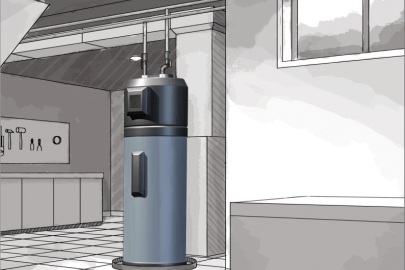Ways to Maintain Your Home's Hot Water System Functioning Well
Ways to Maintain Your Home's Hot Water System Functioning Well
Blog Article
How do you actually feel when it comes to Water Heater Maintenance Tips You Can't Afford to Forget?

Hot water is important for daily convenience, whether it's for a revitalizing shower or washing dishes. To guarantee your hot water system runs efficiently and lasts longer, normal upkeep is essential. This article gives useful tips and insights on just how to preserve your home's warm water system to prevent disturbances and costly fixings.
Introduction
Preserving your home's warm water system might appear difficult, but with a couple of basic steps, you can guarantee it operates efficiently for years ahead. This guide covers everything from comprehending your hot water system to do it yourself upkeep ideas and knowing when to employ professional aid.
Value of Keeping Your Hot Water System
Normal maintenance not just expands the life-span of your hot water system however additionally ensures it runs efficiently. Ignoring upkeep can cause lowered effectiveness, greater energy expenses, and also early failure of the system.
Indicators Your Hot Water System Requirements Upkeep
Knowing when your hot water system requires focus can stop significant issues. Watch out for indicators such as inconsistent water temperature, odd sounds from the heater, or rustic water.
Recognizing Your Hot Water System
Before diving into upkeep jobs, it's valuable to comprehend the basic components of your warm water system. Normally, this consists of the water heater itself, pipes, anode poles, and temperature controls.
Regular Monthly Maintenance Tasks
Regular regular monthly checks can assist capture minor problems before they intensify.
Purging the Water Heater
Purging your water heater eliminates debris buildup, improving efficiency and lengthening its life.
Monitoring and Changing Anode Rods
Anode poles stop deterioration inside the tank. Examining and replacing them when worn is vital.
Inspecting and Adjusting Temperature Settings
Adjusting the temperature setups ensures optimal performance and safety.
DIY Tips for Maintenance
You can perform several upkeep jobs on your own to maintain your warm water system in leading condition.
Checking for Leaks
Routinely examine pipes and connections for leaks, as these can bring about water damages and greater expenses.
Evaluating Pressure Alleviation Valves
Evaluating the pressure relief valve guarantees it operates properly and avoids excessive pressure buildup.
Shielding Pipelines
Protecting hot water pipelines minimizes warm loss and can conserve energy.
When to Call a Specialist
While DIY maintenance is beneficial, some concerns call for expert knowledge.
Complicated Issues Requiring Specialist Assistance
Examples consist of significant leaks, electric issues, or if your water heater is continually underperforming.
Routine Expert Maintenance Perks
Professional upkeep can include thorough examinations, tune-ups, and making sure compliance with safety requirements.
Conclusion
Normal maintenance of your home's warm water system is vital for efficiency, long life, and price savings. By adhering to these suggestions and recognizing when to seek professional aid, you can guarantee a reliable supply of warm water without unexpected interruptions.
Water Heater Maintenance Tips
Test the TPR Valve
Shut off the power and the cold-water supply valve. Place a bucket under the pipe connected to the temperature-pressure-release (TPR) valve on the top or side of the tank. (This valve opens if the tank pressure gets too high.) Lift the valve’s tab to let some water out, then let go. If water keeps flowing, drain the tank partway, unscrew the old valve with a pipe wrench, and install a new one. Check the Anode Rod
Put a hose to the tank’s drain cock and let out a few gallons of water. Now fit a 1 1/16-inch socket onto the rod’s hex head on top of the heater (or under its top plate) and unscrew the rod. If it’s less than ½ inch thick or coated with calcium, buy a new one, wrap its threads with Teflon tape, put it back in the tank, and tighten securely. Use this segmented rod if headroom above the tank is limited. Drain the Tank and Wash Out Sediment
Drain the remaining water in the tank into the bucket, then stir up the sediment on the tank’s bottom by briefly opening the cold-water supply valve. Drain and repeat until clean water comes out of the hose. Close the drain cock, refill the tank, and turn its power back on. Adjust the Temperature
Find the temperature dial on the side of the tank and unscrew its cover. Adjust the dial to 120 degrees using a flathead screwdriver. For every 10 degrees the temperature is lowered, you can expect to save up to 5 percent in energy costs. Turn the water heater off or the thermostat down to its lowest setting if you plan to be away from home for more than three days. Insulate the Pipes
Buy some self-sticking 3/8-inch-thick foam pipe insulation that matches the pipes’ diameter. Slide the foam over the hot-and cold-water pipes as far as you can reach. Insulating the cold-water pipe prevents condensation in summer. Peel the tape and squeeze the insulation closed. If the pipe is 6 inches or less from the flue, cover it with 1-inch-thick unfaced fiberglass pipe wrap. https://www.thisoldhouse.com/plumbing/21016402/how-to-maintain-a-water-heater

I was introduced to that article about Tips on Maintaining a Water Heater through a good friend on our other blog. You should take the time to promote this page if you enjoyed it. We value your readership.
Call Today Report this page